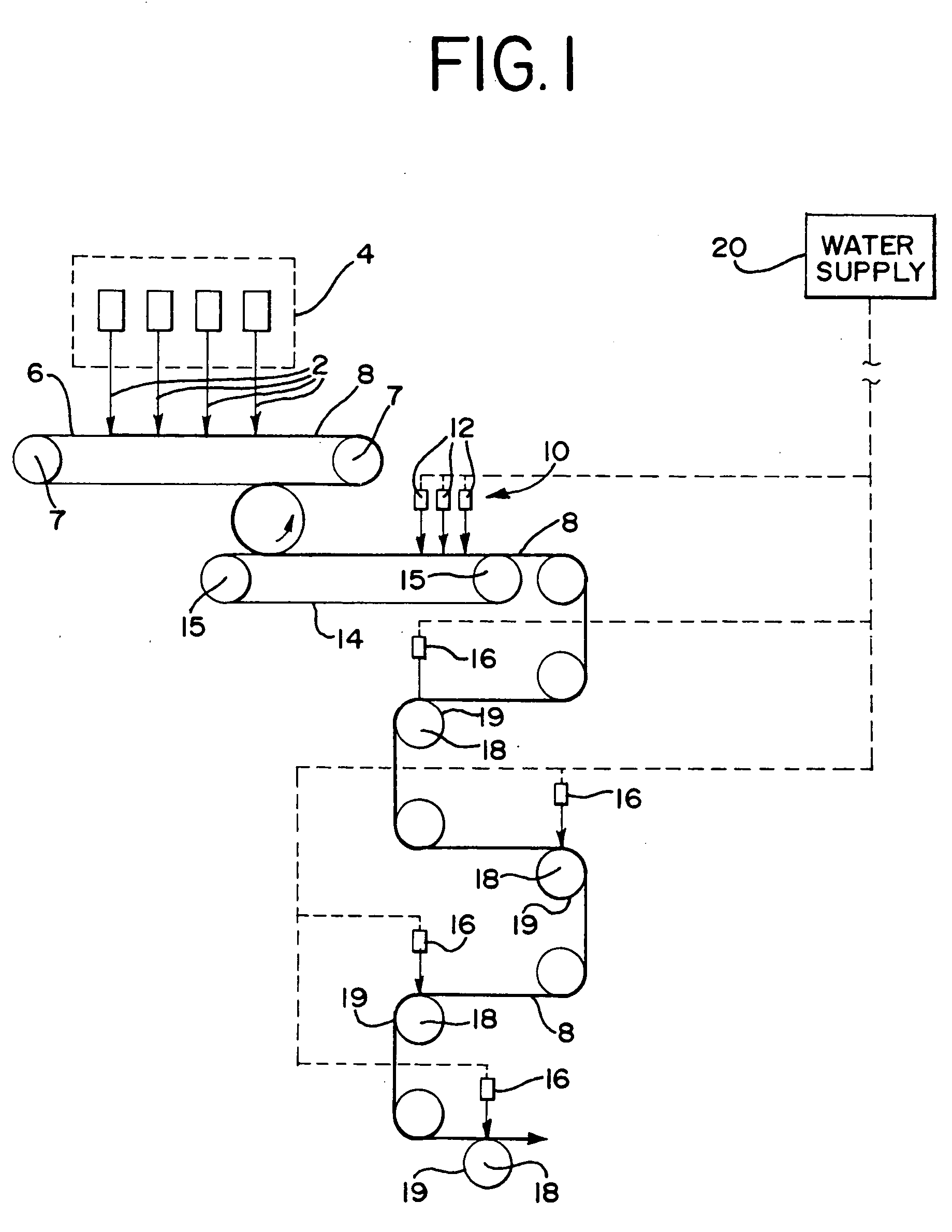Hydroentanglement of continuous polymer filaments
a technology of polymer filaments and polymer filaments, which is applied in the direction of weaving, transportation and packaging, and other domestic objects, can solve the problems of more limited elongation and tensile strength, and achieve the effects of excellent tensile strength, high elongation and high strength
- Summary
- Abstract
- Description
- Claims
- Application Information
AI Technical Summary
Benefits of technology
Problems solved by technology
Method used
Image
Examples
Embodiment Construction
[0037] Turning now to the drawings, FIG. 1 illustrates a first embodiment of the process and apparatus of the invention. Continuous filaments 2 are melt extruded, drawn, and then deposited by beam 4 on moving porous support wire 6 winding on rollers 7 to form an unbonded filament web 8. After drawing, filaments 2 have a denier of between about 0.5-3, with a most preferred denier of 1-2.5, and are preferably comprised of a melt extruded thermoplastic polymer, such as a polyester, polyolefin (such as polypropylene), or polyamide. As filaments 2 are continuously extruded, they are substantially endless. Deposited, unbonded filament web 8 is relatively fragile, thin, and easily disturbed. Web 8 may be comprised of more than one layer of filaments 2. The dominant orientation of filaments 2 is in the machine direction, with some degree of overlap in the cross direction. If desired, a variety of techniques may be employed to encourage further separation of individual filaments 2 and greate...
PUM
| Property | Measurement | Unit |
|---|---|---|
| elongation | aaaaa | aaaaa |
| elongation | aaaaa | aaaaa |
| pressures | aaaaa | aaaaa |
Abstract
Description
Claims
Application Information
 Login to View More
Login to View More - R&D
- Intellectual Property
- Life Sciences
- Materials
- Tech Scout
- Unparalleled Data Quality
- Higher Quality Content
- 60% Fewer Hallucinations
Browse by: Latest US Patents, China's latest patents, Technical Efficacy Thesaurus, Application Domain, Technology Topic, Popular Technical Reports.
© 2025 PatSnap. All rights reserved.Legal|Privacy policy|Modern Slavery Act Transparency Statement|Sitemap|About US| Contact US: help@patsnap.com



